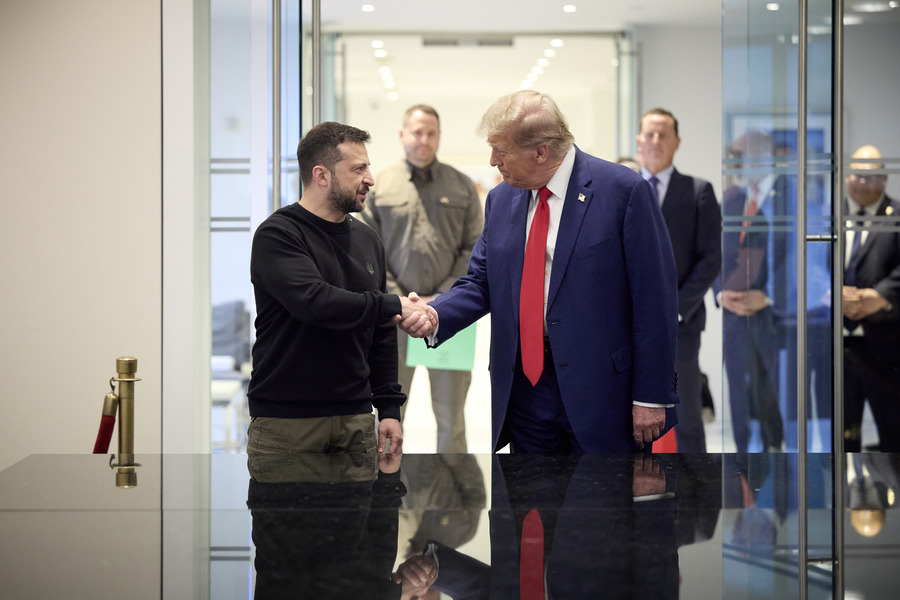Water Wars: China Confronts US as Manila Cozies with China
China seizes U.S. underwater drone off the Philippine Coast
Published by The Lawfare Institute
in Cooperation With

China seizes U.S. underwater drone off the Philippine Coast

Image of a UUV similar to that deployed by the US Navy (Photo: Wall Street Journal)
The Chinese Navy seized a US underwater drone as it was about to be retrieved by a US naval vessel approximately 50 nautical miles off the Philippines coast last Thursday. It was the first such seizure by the Chinese in recent memory. By Saturday Pentagon Press Secretary Peter Cook confirmed that Washington had “secured an understanding” that China would return the drone. The Chinese Foreign Ministry similarly told Reuters that the two countries were using military channels to “appropriately handle this issue.” The Chinese Navy returned the drone to US Pacific Fleet on Monday near the location where it was initially seized. The drone is one of approximately 130 similar underwater vehicles used by the US Navy to collect unclassified oceanographic data, including temperature and depth.
Officials in both Beijing and Washington engaged in a heated exchange about this seizure throughout the week. Cook told reporters that, “this incident was inconsistent with both international law and standards of professionalism for conduct between navies at sea.” The Pentagon’s press statement went on to state that the seized vehicle “is a sovereign immune vessel of the U.S. Navy which was conducting routine operations in international waters of the South China Sea in full compliance with international law.” The Chinese Defense Ministry sharply contradicted this characterization, writing that the Chinese Navy simply discovered a piece of “unidentified equipment,” which it checked to prevent any navigational safety issues. A spokesperson also accused Washington of unilaterally “hyping up” the issue in an “inappropriate” manner “not beneficial to the smooth resolution of this issue.”
President-elect Trump also weighed in on the issue. On Saturday he tweeted, “China steals United States Navy research drone in international waters – rips it out of water and takes it to China in unpresidented act.” Chinese officials denied that the drone was stolen. Hours later, however, Trump tweeted that, “We should tell China that we don’t want the drone they stole back – let them keep it!” Beijing thereafter had no further comment.
A week after the seizure, many questions remain unanswered. First, it is unclear whether Chinese officials have developed a legal rationale for this seizure. Much of this confusion stems from contradictory statements on China’s characterization of the waters within which this seizure occurred. In one statement, the Defense Ministry framed the issue as one occurring “within Chinese waters.” A front-page editorial in the People’s Daily, on the other hand, called the area China’s “jurisdictional waters.” Taylor Fravel at the Maritime Awareness Project, however, found that the seizure took place outside even China’s so-called nine-dash line. Indeed, a trio of Lawfare contributors contends that the seizure simply cannot be supported under international maritime law. Julian Ku concludes that, “China has seized a vessel belonging to a foreign government in clear violation of any possible theory of international law it could offer.” James Kraska and Pete Pedrozo similarly find that the seizure violates US sovereign immunity and interferes with high seas freedoms. For a detailed look at legal arguments proffered in Chinese sources, see William Yale’s wonderful summary in The Navalist.
Second, we do not fully understand the level at which the decision to seize this drone was made. The Pentagon is still assessing whether personnel on the Chinese vessels that seized the drone or more senior officials in Beijing made this decision. Chinese Foreign Ministry Spokesperson Hua Chunying criticized those who would “over-read” the situation by asking whether it was “a misjudgment or orders from higher up.”
Lastly, analysts continue to debate China’s motivations in seizing the drone. Chinese Rear Admiral Yang Yi asked whether the underwater drone, “was indeed some sort of scientific experiment or military reconnaissance in such a pretext.” Other statements reinforced this concern with US surveillance. Defense Ministry Spokesperson Yang Yujun said that, “China resolutely opposes” close-in reconnaissance and military surveys “and demands that the US side should stop such activities.” Zhang Bohai, a Hong Kong-based security expert, however, argued that the drone was more likely perceived as a threat to China’s fleet of strategic nuclear submarines operating in the area. This thesis is supported by an editorial from the People’s Daily contending that the underwater domain will become a predominant arena for Sino-American competition. Shaun Rein at IBT, as well as Harry Kazianis at the Center for the National Interest, posit that the move was intended to warn President-elect Trump against changes in the “One China” policy. Bonnie Glaser from CSIS contends more generally that the move was meant to signal that, “the US couldn’t challenge China’s core interests with impunity.” It is common for China to prod each new US administration, though such tests have traditionally occurred after inauguration.
Whatever the reason, Wu Shicun, a key government advisor on South China Sea affairs, suggested that, “China wants to send out a signal that if you spy on us underwater and threaten our national security, we have measures to deal with it. On the South China Sea issue, we took in humiliations with a humble view in past years. I think this era has finished.”
It appears that some US partners in the region are concerned that Washington will not be forceful in responding to this new era of Chinese strategy. A US defense official told the Washington Post that the Obama administration was “glad to get [the drone] back and put this behind us.” Japanese officials were less reassured. Chief Cabinet Secretary Roshihide Suga said that, “it is necessary for China to clearly explain the matter to the international community, including the basis (for its actions) under international law.” Unsurprisingly, Beijing officials criticized Tokyo’s involvement. Jane Perlez at the New York Times reports that, “Across Asia, diplomats and analysts said they were perplexed at the inability of the Obama administration to devise a strong response to China’s challenge.” US Senator John McCain reflected a similar sentiment, stating that “freedom of the seas . . . are not self-enforcing. American leadership is required in their defense. But that leadership has been sorely lacking.”
A number of analysts have written on what this incident will mean for Sino-American relations, and the region more broadly. Richard Heydarian at the New York Times concludes that all Southeast Asian countries are “bracing not only for unpredictability, but also for stormy waters involving U.S. and China primarily.” Philippine Defense Secretary Delfin Lorenzana reflected this concern, stating that “I think one of these days we will require the US to inform us what they are doing” in Philippine waters and that “we are very concerned if there will be miscalculation on the part of the two superpowers.” Jerome Cohen writes that analysts should see the Taiwan dilemma and this confrontation in the South China Sea as connected. Jeff Smith at The Diplomat argues that this seizure reveals the danger of China’s strategic ambiguity. Perhaps Chinese scholars had the opportunity to discuss these issues at an underwater drone symposium scheduled two days after the seizure took place.
In other news...
The Philippines
Philippine officials once again roiled the region with a series of statements reaffirming Manila’s warming relations with Beijing. Foreign Minister Perfecto Yasay told reporters that the Philippines would not issue a diplomatic protest in response to evidence that China deployed anti-aircraft and anti-missile systems on artificial islands in the South China Sea. Yasay further stated that China should “take whatever action is necessary in the pursuit of their national interests . . . and we will leave it at that.” Nevertheless, he did reaffirm that the arbitral tribunal had definitively decided upon the legality of Chinese militarization and construction in the South China Sea.
President Rodrigo Duterte expressed less faith in the ruling. On Saturday he said that, “In the play of politics now, I will set aside the arbitral ruling.” Duterte went on to say that he “will not impose anything on China. Why? Because the politics here in Southeast Asia is changing.” China, unsurprisingly, was quite pleased. Foreign Ministry Spokesperson Hua Chunying declared that, “China welcomes and appreciates the remarks by President Duterte, whose policy on the South China Sea arbitration meets the fundamental interests of the two countries.” Later in the week, however, Secretary Yasay reiterated the government’s “respect for and firm adherence to this milestone ruling” and that Manila would be “guided by its parameters” when confronting maritime claims in the South China Sea. Presidential Spokesman Ernesto Abella also clarified that while Duterte is “not giving up” on Manila’s sovereign claims to Scarborough Shoal, he has decided to “set aside” the issue “for conversation someday.”
President Duterte also suggested that Manila would be willing to split the proceeds from oil deposits in Philippine-claimed waters of the South China Sea with Beijing. Again, Abella later reminded reporters that, “there is no government policy” on joint oil development “at this stage.” Instead, Abella suggested that Duterte was referring to “the possibility of business-to-business partnerships.” More to the point, perhaps, Manila’s Ambassador to Beijing told reporters that trade and commerce issues have been put on the “fast train” while territorial disputes have been placed on the “slow train.”
China
Beijing carried out its first ever live-fire drills using an aircraft carrier and fighters in the northeastern Bohai Sea. Ten naval vessels and ten aircraft conducted a series of combat drills featuring guided missiles. Xinhua also published an article containing the statement Chinese vessels use when confronting other vessels within the nine-dash-line: “This is Chinese navy warship 153, you are approaching our exclusive economic zone. I am authorized to issue a warning against you.”
A Chinese container ship is stuck on a reef in the East China Sea. No injuries or environmental damage was reported. Xinhua also announced that daily civilian charter flighty to Chinese-controlled Woody Island began on Thursday. And finally, Andrew Erickson from the China Maritime Studies Institute released a report on China’s shipbuilding industry. A synopsis is available here.
Japan
Tokyo wasted no time this week in increasing its defense capacity. Prime Minister Shinzo Abe announced a substantial increase in the Coast Guard’s budget for the next fiscal year. The extra yen are earmarked to add five large patrol ships to the Coast Guard’s fleet and hire 200 additional personnel. The Cabinet also approved a 1.4% year-on-year increase in Japan’s defense budget. For the first time, a substantial portion of this budget will be dedicated to an advanced ship-based ballistic missile interceptor. This is the fifth consecutive year of increased defense spending.
Japan also continued to maintain robust security partnerships. Tokyo officials are working hard to win a contract to supply Thailand with an air defense radar system. The government convinced Japan’s Supreme Court that a plan to relocate a US military base in Okinawa was legal. Washington and Tokyo also celebrated the return of 10,000 acres of land previously controlled by the US military in Okinawa to the Japanese government. This is the largest such transfer since 1972. Finally, Japan and Indonesia established a Maritime Forum to support Jakarta’s efforts to protect its maritime sovereignty. The partnership will also bolster economic development of remote islands.
Malaysia
Defense Minister Datuk Seri Hishammuddin Hussein told reporters that while individual Southeast Asian States “cannot afford to face the major world powers [individually] . . . we can jointly as ASEAN member countries.” Hishammuddin also said that Malaysia would ask China to clarify and confirm whether it has emplaced weapons on artificial islands in the South China Sea.
Analysis, Commentary, and Additional Information
We start with two high-level pieces. First, Michael Peck at The National Interest argues that maritime hybrid warfare will play an increasingly salient role in the South China Sea (and beyond). Evan Feigenbaum, also at The National Interest, concludes that increasing Chinese economic statecraft and military power make Sino-American relations more difficult than at any time since the Nixon administration.
Two more pieces focus us more explicitly on the South China Sea. Richard Heydarian explores the contours of Manila’s changing foreign policy and its implications for the region. Linh Tong at The Diplomat begins a two-part series analyzing why the South China Sea is a key test for ASEAN’s continued viability as a regional mechanism for resolving disputes.
Finally, a couple of pieces argue that China is not to blame for increasing tensions. Mark Valencia at the South China Morning Post concludes that it is the United States and its regional partners that started, and perpetuate, regional militarization. The Global Times also provides an overview of its annual conference, where many others agreed with Valencia’s analysis. Karyn Wang takes a slightly different tack, questioning whether China has the desire to become the South China Sea’s policeman.
Water Wars is our weekly roundup of the latest news, analysis, and opinions related to ongoing tensions in the South and East China Seas. Please email Chris Mirasola with breaking news, relevant documents, or corrections.


.jpg?sfvrsn=d5e57b75_5)


